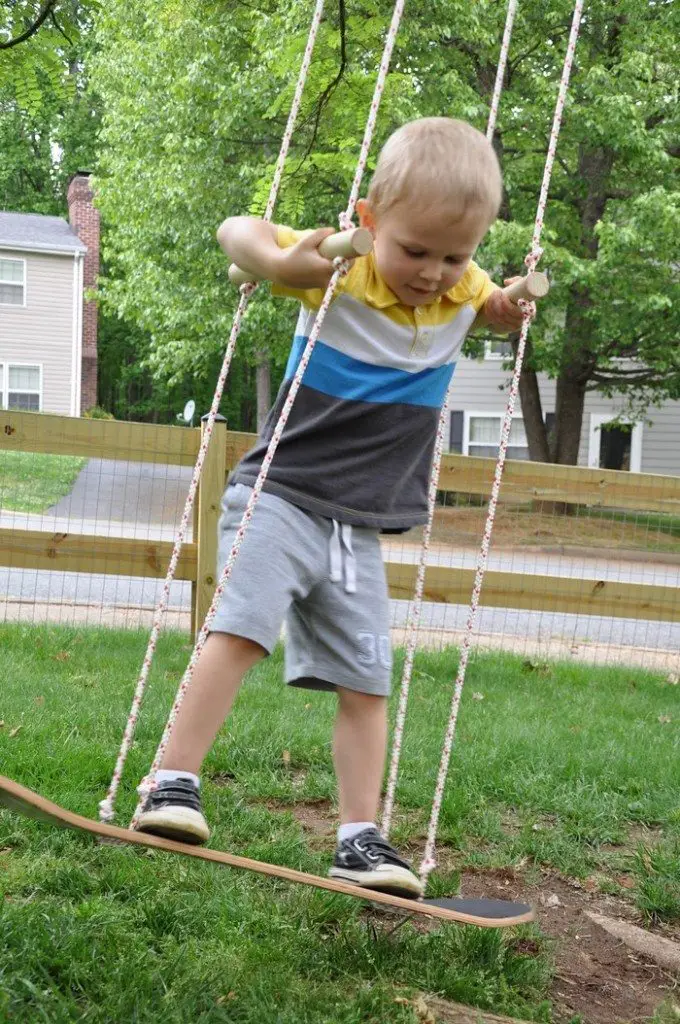Getting your kids – and yourself – off the couch is good for everyone’s physical and mental health. Stepping outside to make the most of the sunshine and fresh air permits exercise even as it gives you more opportunities to bond with your children. And playtime is so much easier when you do not have to go to the local park to enjoy a swing set.
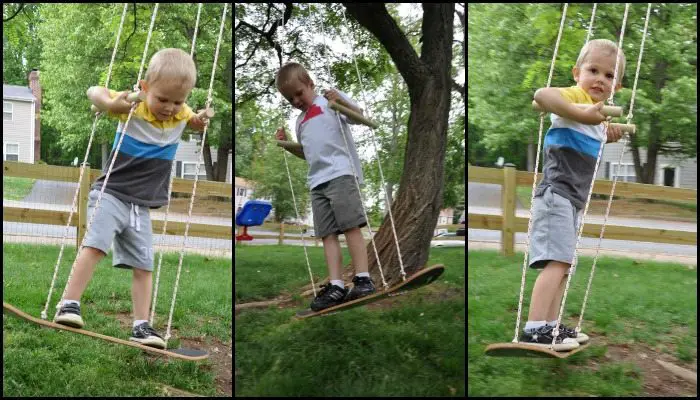
If you don’t have a swing set in the backyard, you don’t have to buy one, just a used skateboard!
Who says you need to spend a fortune to provide the little ones with fun outdoor play equipment? This DIY skateboard swing is a great alternative that is just as fun (maybe even more).
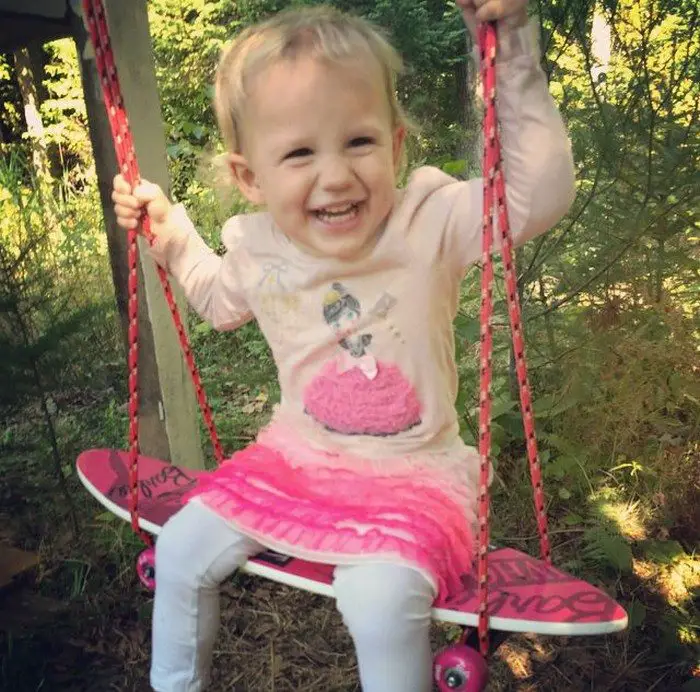
Skateboards are sure cheaper than a swing set, and you can get one at an even lower price if you try the thrift store! And while you’re there, you might as well look for a broomstick or any wooden rod that you can use for this project.

This DIY project only takes around 20 minutes to complete. Just perfect for kids who can’t wait to have their very own swing!
Is this going to be your next project for them?
Contents
Building a Skateboard Swing
Materials
- Old Skateboard Deck
- Rope (take note of its weight limit)
- 2 Threaded Quick Links
- Dowel / Broom Stick
Tools
- Cordless Drill with 3/8 Drill Bit
- Tape Measure
- Pencil Marker
Instructions
Step 1: Prepare the Skateboard
- Inspect the Skateboard: Ensure the skateboard deck is free of cracks and is sturdy.
- Clean the Deck: Wipe down the skateboard deck to remove any dirt or debris.
Step 2: Mark and Drill Holes
- Measure and Mark: Using the tape measure and pencil marker, mark two points on each end of the skateboard deck, about 2 inches from the ends and centered from side to side.
- Drill Holes: Using the cordless drill with a 3/8 drill bit, drill through the marked points. These holes will be used to attach the ropes.
Step 3: Prepare the Rope
- Cut the Rope: Measure and cut two equal lengths of rope, considering the height at which you want the swing to hang and the extra needed for tying knots.
- Thread the Rope: Feed each rope through the holes from the top to the bottom of the skateboard deck. Ensure the ropes are even on each side.
Step 4: Attach the Dowel
- Insert the Dowel: Slip the dowel or broomstick through the loops of rope underneath the skateboard. This will act as a stabilizer and provide a place for the feet or hands.
- Secure the Dowel: Tie the ropes securely around the dowel to prevent slipping.
Step 5: Attach the Quick Links
- Attach to Rope: Tie a secure knot at the end of each rope above the skateboard. Attach a threaded quick link to each knot.
- Close the Links: Ensure the quick links are tightly closed to secure the knots.
Step 6: Hang the Swing
- Choose a Strong Support: Select a sturdy tree branch or a solid structure capable of supporting the weight.
- Attach the Swing: Use the quick links to attach each rope to the tree branch or structure. Ensure it is secure and evenly balanced.
Step 7: Safety Check and Adjustments
- Check the Swing: Gently pull on the swing to ensure everything is secure and the skateboard does not tilt.
- Adjust as Needed: Adjust the ropes if necessary to ensure the skateboard is level and at the desired height.
Step 8: Enjoy
- Test It Out: Allow someone light to test the swing gently to ensure it holds and is stable.
- Have Fun: Enjoy your new skateboard swing safely!
Click on any image to start the lightbox display. Use your Esc key to close the lightbox.![]()
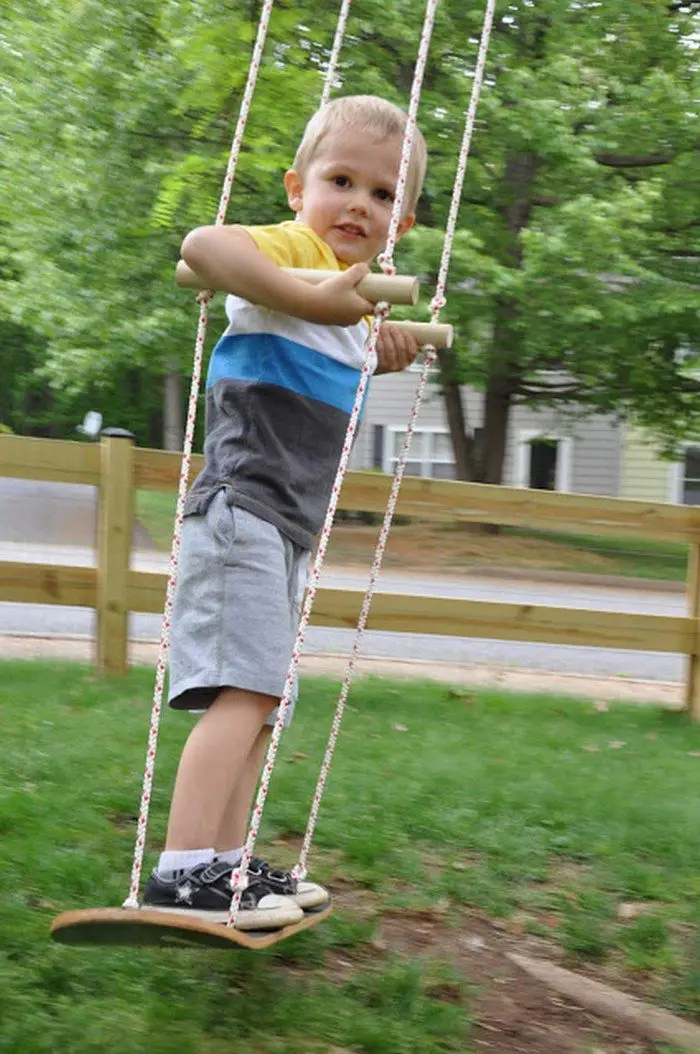


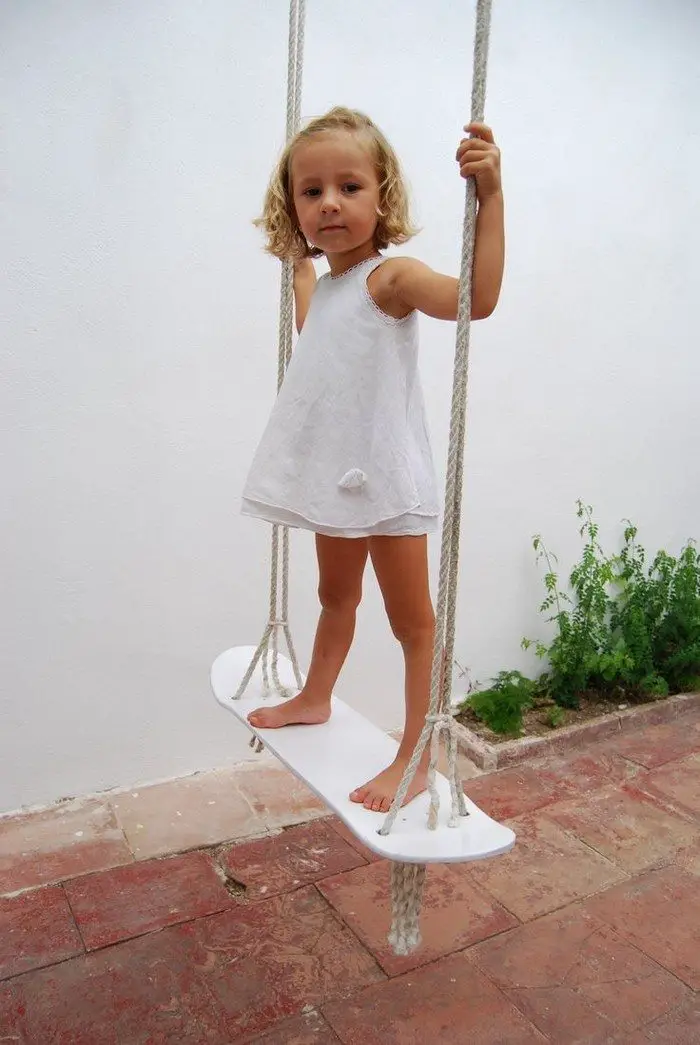
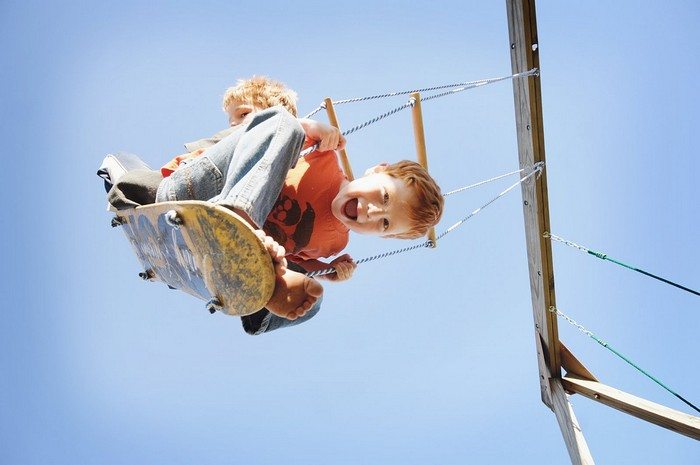
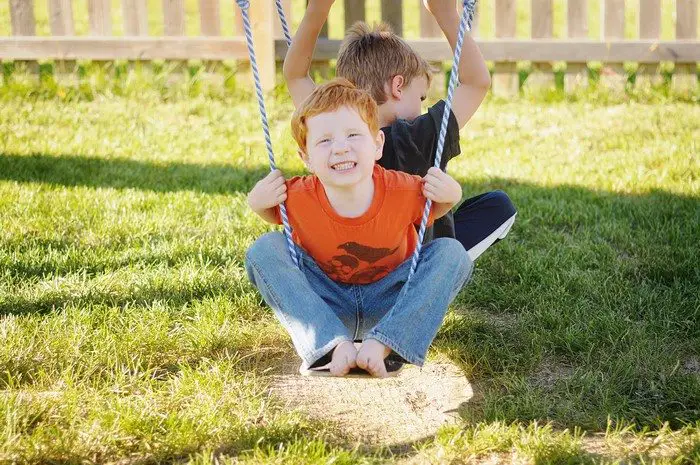
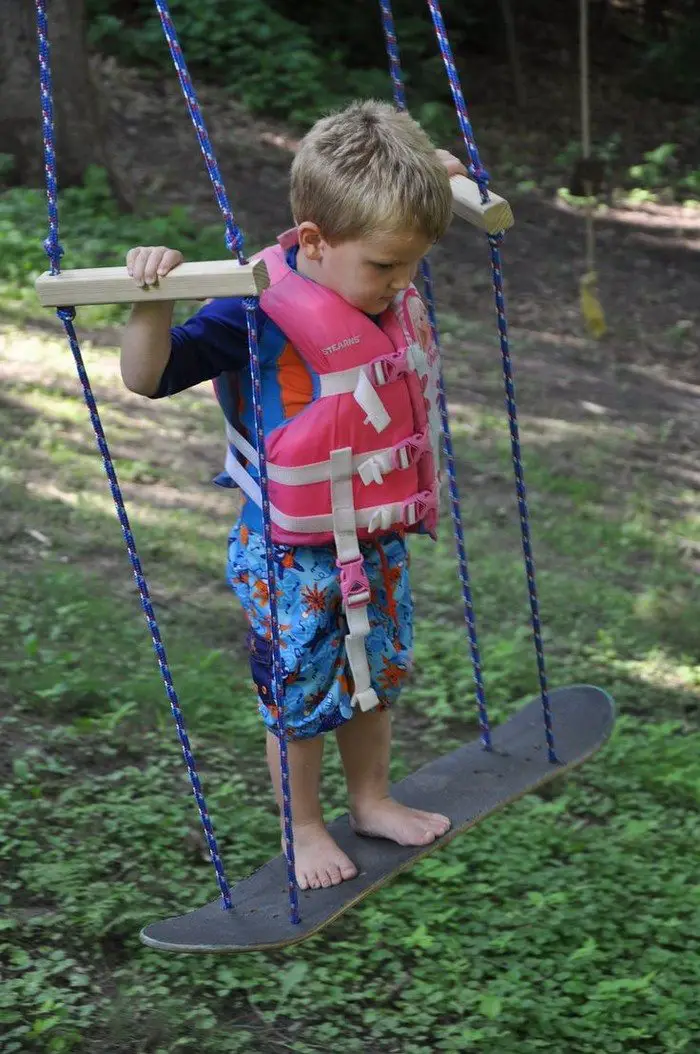
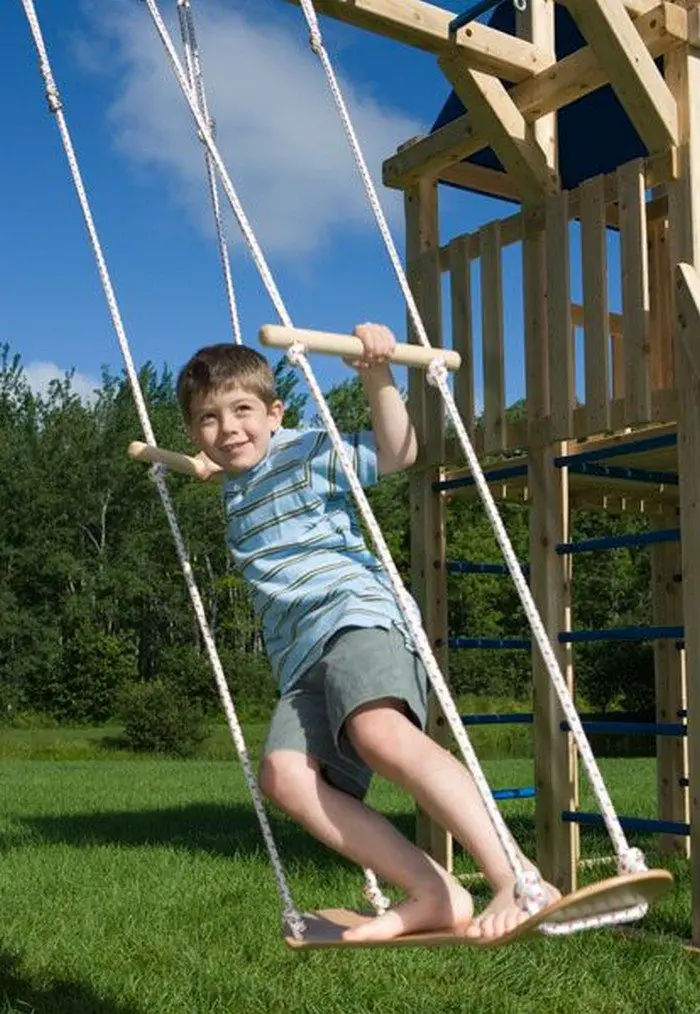
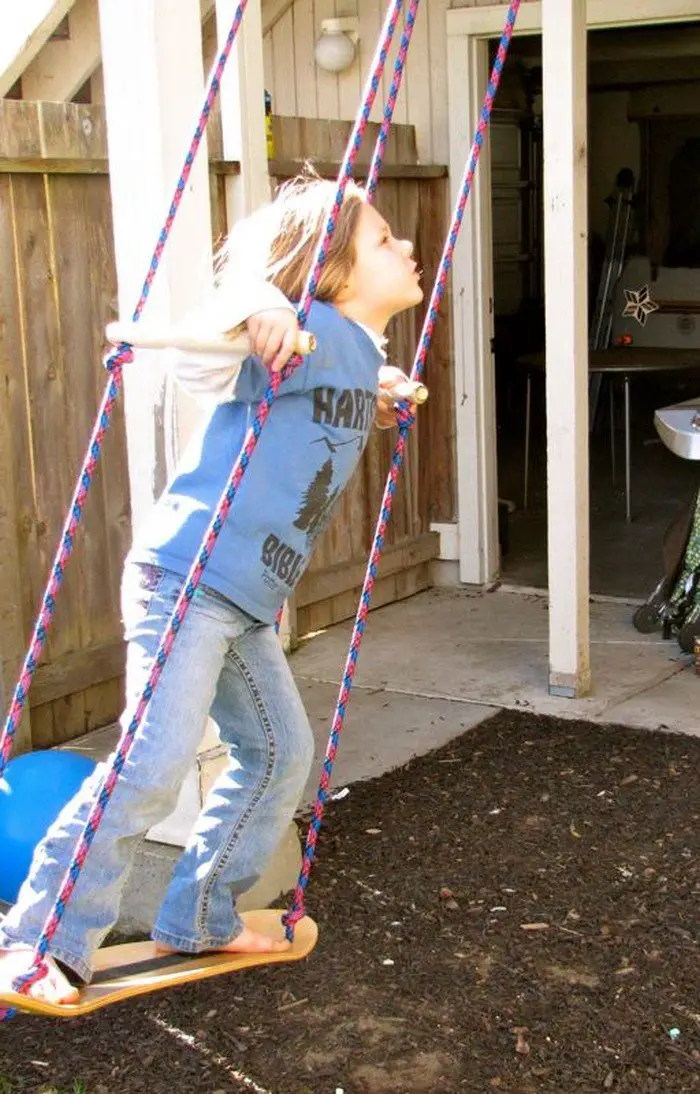
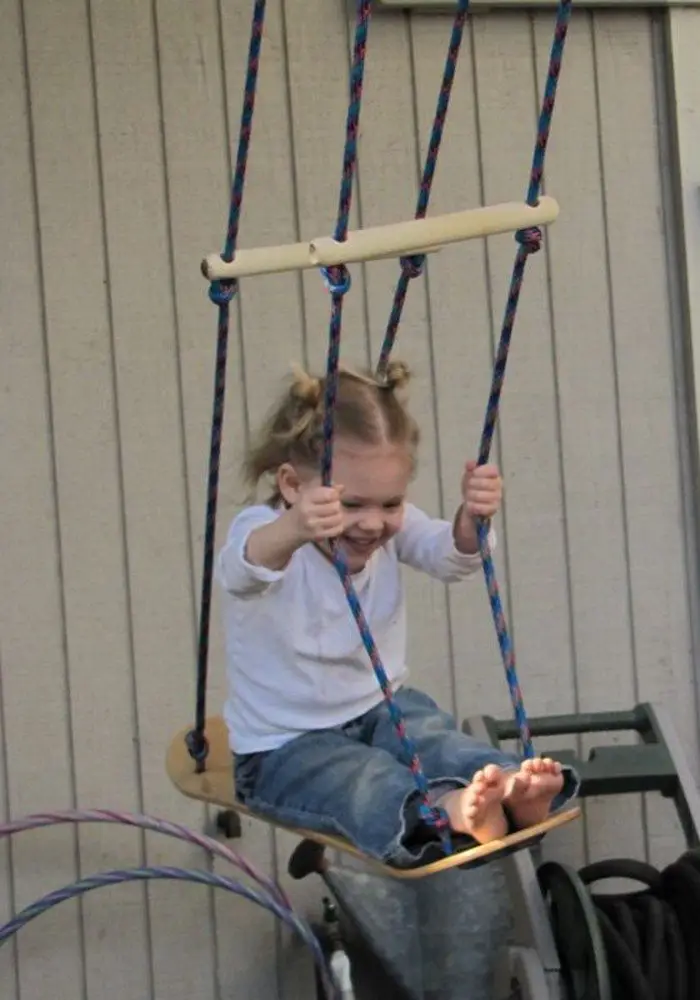

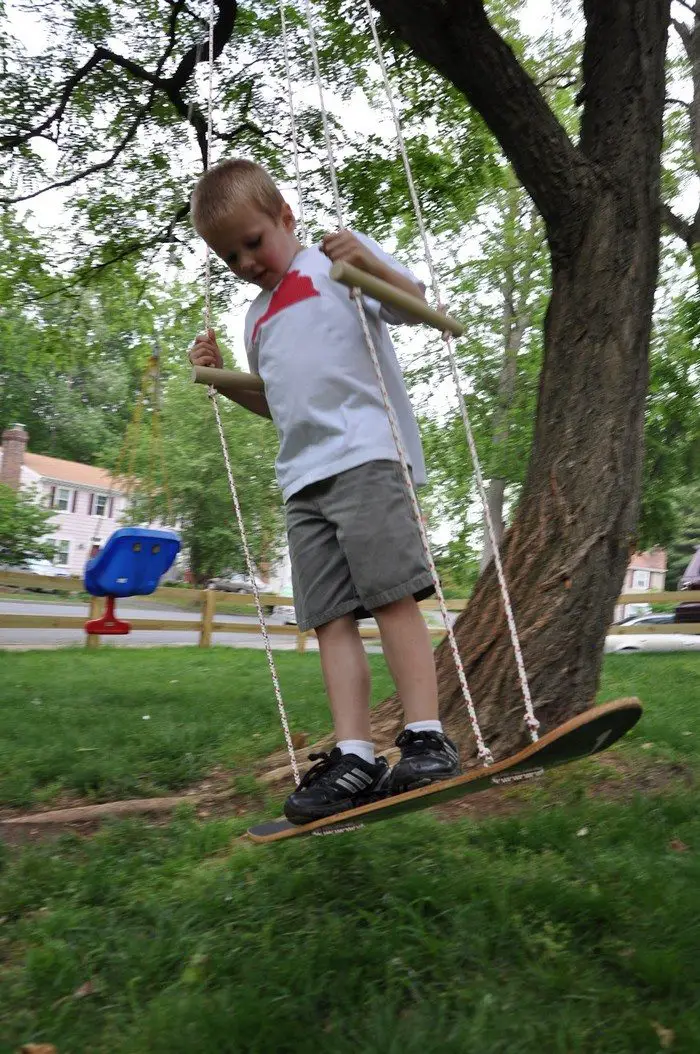
You can get more step-by-step instructions from Little Bit Funny over here…
Safety Guidelines for DIY Skateboard Swings
Building a DIY skateboard swing can be a delightful addition to your backyard, providing hours of fun for both kids and adults. However, it’s crucial to prioritize safety to prevent accidents and ensure a secure environment for everyone.
Follow these safety guidelines to help maintain a safe play area.
Choose the Right Materials
- Rope Quality: Ensure that the rope is sturdy and capable of supporting the weight it will bear. Check the weight limit and opt for weather-resistant materials if the swing will be outdoors.
- Skateboard Integrity: Use a skateboard deck that is free of cracks and structural damage. Inspect the deck regularly for any signs of wear or deterioration.
Secure Installation
- Strong Anchoring Point: Select a strong and healthy tree branch or a robust structure that can securely support the swing’s weight. Avoid dead or weak branches that might break under stress.
- Proper Knots: Use secure knots that can handle dynamic loads without loosening. Research and apply knots like the bowline or figure-eight follow through for reliable performance.
Regular Maintenance
- Routine Checks: Regularly inspect the swing, especially the ropes, knots, and skateboard deck, for any signs of wear, fraying, or weakness. Replace materials as needed.
- Weather Effects: Consider the impact of weather on your materials, especially if the swing is not under cover. Moisture, heat, and cold can all affect the durability and safety of the swing.
Safe Usage
- Supervised Play: Always supervise children when they are using the skateboard swing to prevent unsafe behaviors.
- Appropriate Use: Encourage users to sit on the swing properly and avoid standing or jumping off while swinging. Ensure it is used in a safe manner consistent with its design.
Emergency Preparedness
- Plan for Accidents: Keep a first aid kit nearby and ensure that all family members know basic first aid procedures in case of an accident.
- Emergency Numbers: Have a list of emergency contacts readily available, including local emergency services.
By adhering to these guidelines, you can help ensure that your DIY skateboard swing is a safe and enjoyable addition to your home. Regular checks and maintenance paired with responsible usage are key to a long-lasting and secure swing.
Choosing the Best Location for Your Skateboard Swing
Installing a DIY skateboard swing is not just about hanging it anywhere; it’s about finding the perfect spot that ensures safety, maximizes fun, and complements your outdoor space. Here are several considerations to keep in mind when selecting the ideal location for your new skateboard swing.
Assess the Space Availability
- Sufficient Clearance: Ensure there is ample space around the swing for safe use. There should be at least 6 feet of clearance on all sides of the swing to prevent collisions with other objects or structures.
- Room for Movement: Consider the path of the swing in motion. There needs to be plenty of room both in front and behind the swing to accommodate the arc of its travel.
Evaluate the Support Structure
- Strength and Stability: Whether you’re attaching the swing to a tree, a beam, or another structure, it must be strong enough to support the weight and movement of users without any risk of collapsing.
- Height Considerations: The support structure should be high enough to allow for a satisfying skateboard swing arc without posing a risk of injury from too great a height.
Check the Ground Conditions
- Level and Soft Landing: Choose a location where the ground is level and ideally covered with soft material such as grass, wood chips, or rubber mulch. This reduces the risk of injuries from falls.
- Drainage: Avoid areas that tend to collect water or remain damp, as these can weaken your skateboard swing setup over time and create muddy or slippery conditions around the swing.
Consider Sunlight and Shade
- Sun Exposure: Think about the amount of direct sunlight the skateboard swing will receive. Locations that offer a mix of sun and shade throughout the day are ideal, as they provide a comfortable environment for users.
- Protection from Elements: If possible, choose a location that provides some protection from the elements, such as a spot partially shielded by trees or buildings to enhance comfort and longevity of the swing.
Safety and Visibility
- Visibility from the House: For safety, especially with children, install the skateboard swing within sightlines from your home’s windows or main outdoor areas. This makes it easier to supervise without being right beside the swing.
- Away from Hazards: Ensure the swing is set up away from potential hazards such as fences, garden tools, and barbeque grills.
Selecting the right location for your skateboard swing involves careful consideration of the available space, the safety of the setup, and the comfort of the users. By taking the time to assess these key factors, you can create a safe, enjoyable, and well-integrated addition to your outdoor living space.
Conclusion
A unique chance to recycle an old skateboard and make lifelong memories is presented by building a skateboard swing. One may ensure that every user will have a fun and safe experience by carefully choosing the materials and arrangement. The swing needs regular maintenance and supervision to be in top condition.
Keeping these ideas in mind, you can have a safe and enjoyable addition to your outside space. For more playground ideas, check out our PVC ball pit project!

